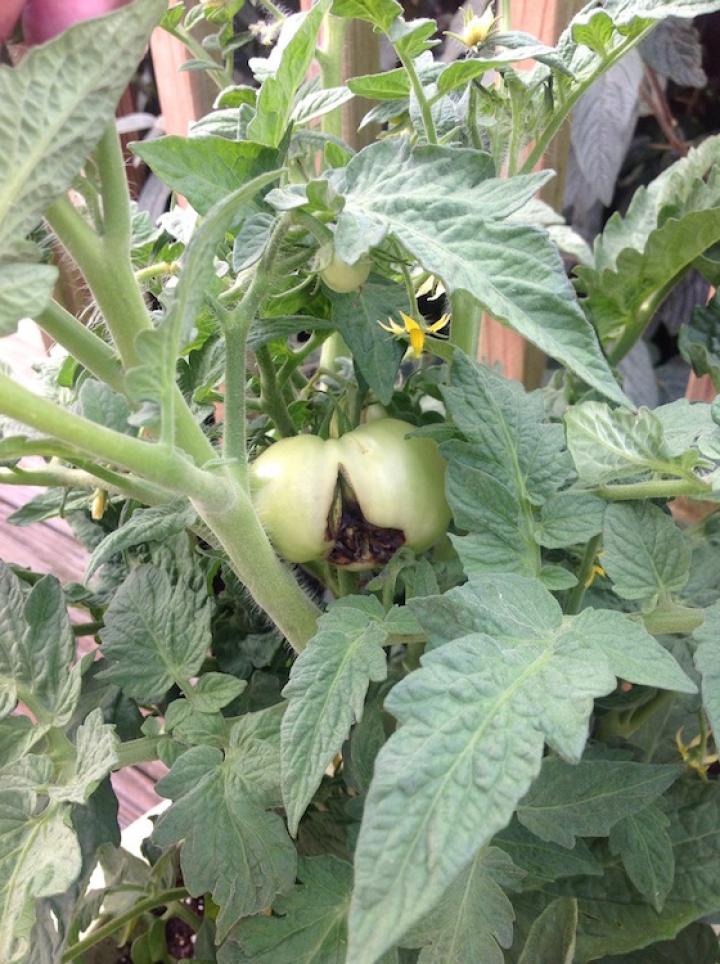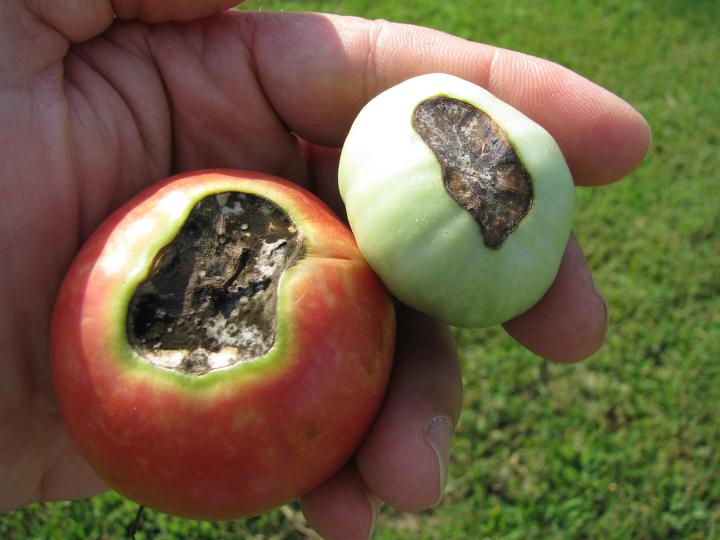






Blossom-end rot on tomato plant
Catherine BoeckmannHere are tips on how to identify, control, and prevent blossom-end rot on your tomatoes and garden plants.
Why are your tomatoes rotting on the bottom? Unfortunately, they probably have blossom-end rot. It is a common problem on tomatoes, eggplants, and squash caused by a low concentration of calcium in the fruit. (Calcium is needed for normal cell growth.) Blossom-end rot usually occurs when there are wide fluctuations of moisture, which reduces uptake and movement of calcium into the plant. When the demand for calcium exceeds the supply, the tissues break down.
Calcium deficiency during fruit formation can also be caused by too much nitrogen fertilizer, high salt levels in the soil, or damage to plant roots during cultivation. Be aware of these causes when caring for tomatoes in order to prevent blossom-end rot.
Some blossom-end rot is more or less normal in the first tomatoes of the season, since the plants are usually under stress during the initial fruit set. If the damaged portion is small, you can trim it off and enjoy the rest of the tomato. Hopefully the problem will ease, because after all, no one wants rotten tomatoes!
Usually blossom-end rot occurs when the fruit is green or ripening. It starts with a small, depressed, water-soaked area on the blossom end of the fruit. As the spot enlarges, it becomes sunken and turns black or dark leathery brown in color.

Share your advice, questions, and comments on blossom-end rot below.
How to Identify House Plant Pests and Diseases and Get Solutions that Work
Organic Cabbage And How To Control Cabbage Pests
Cutworms: How to Identify and Get Rid of Cutworms in Your Garden
Earwigs: How to Identify and Get Rid of Garden Pests
Tomato Hornworms: How to Identify and Get Rid of Garden Pests
Copyright © www.100flowers.win Botanic Garden All Rights Reserved